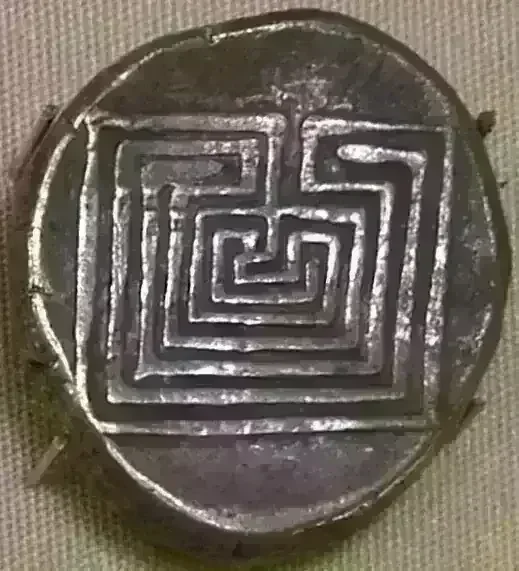Labyrinth

The Labyrinth (Ancient Greek: λαβύρινθος, Labúrinthos) was a legendary complex structure in Greek mythology, created by the master craftsman Daedalus for King Minos of Crete. Built at Knossos, its primary purpose was to contain the Minotaur, a fearsome creature later slain by the hero Theseus. The Labyrinth's design was so intricate that even its creator Daedalus could barely find his way out after its completion.
While the mythological Labyrinth was described as a complex maze with multiple paths and dead ends, ancient visual representations tell a different story. From around 430 BC, Cretan coins began depicting the Labyrinth as a single-path (unicursal) design with seven courses. This simpler pattern, despite contradicting both logic and literary accounts of the Minotaur's prison, became the standard representation through the Roman period and Middle Ages. The more complex branching maze designs only reemerged during the Renaissance with the popularity of hedge mazes.
Modern usage distinguishes between "mazes" and "labyrinths." While these terms are often used interchangeably, specialists use "maze" to describe puzzling structures with multiple paths and choices, while "labyrinth" refers to a unicursal design with a single, unambiguous path to the center. These unicursal labyrinths have appeared throughout history in various forms - on pottery, in cave art, church floors, and as mosaic decorations. Large enough to walk through, these patterns have served purposes ranging from group ceremonies to personal meditation, and are now finding new applications in therapeutic settings within healthcare facilities.